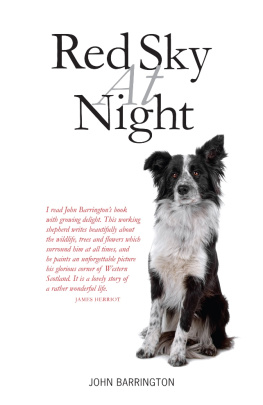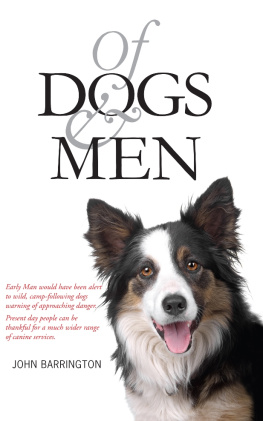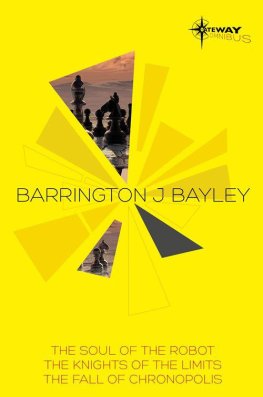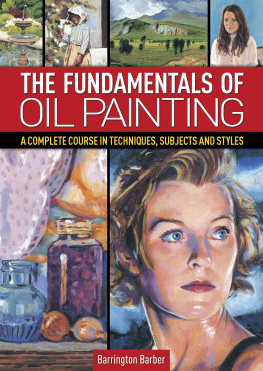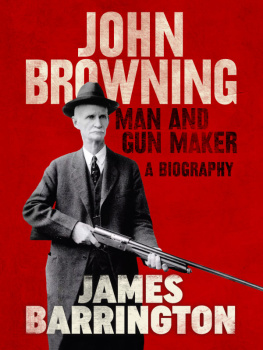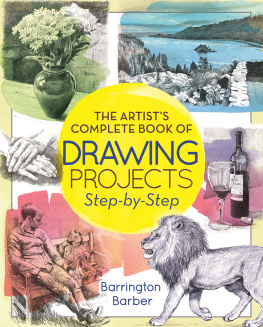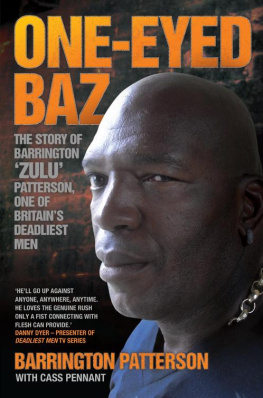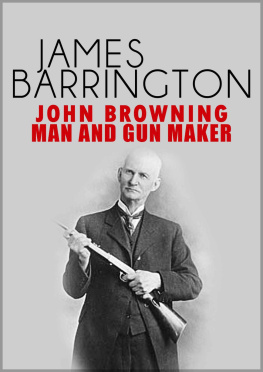JOHN BARRINGTON is an established storyteller and author. For many years he was a hill shepherd, living in Rob Roy MacGregors old house in the heart of the Scottish Highlands. He herded 750 Scottish Blackface sheep on the 2,000ft Perthshire mountains above Loch Katrine. Successful at sheepdog trials, shepherd and dogs have given demonstrations of their ancient craft at two Garden Festivals and many shows, galas and Highland Games.
In 1998, the Scottish Qualification Authority asked John Barrington to design a course in sheepdog handling and management, which took two years to complete. The first classes were run at Oatridge Agricultural College, near Edinburgh, in 2000, the author at the helm. Students were enrolled from Ireland, England and all parts of Scotland.
With a good eye for sheep, John Barrington has judged classes of sheep at the Highland Show in Edinburgh and has made several judging trips to Europe.
Like most shepherds, Barrington is a natural storyteller, a gift he exercises at schools, clubs and societies, and as an after dinner speaker. Stories are recounted on the move during daytime guided tours and twilight ghost walks, and as a commentator at a dozen or so Highland Games each year. Stories told to enliven his whisky tasting sessions are always presented in the right spirit! Red Sky at Night , his first book and a UK bestseller, won him a Scottish Arts Council book award. His latest book, Of Dogs and Men , will be published soon.
The chapters in this book are numbered according to a shepherds count (1 to 10), a pre-Celtic rhyming method of counting sheep, thought to be the oldest language still in use in the British Isles.
By the same author:
Loch Lomond and the Trossachs (2006)
Out of the Mists (2008)
Of Dogs and Men (2013)
Red Sky at Night
JOHN BARRINGTON

Luath Press Limited
EDINBURGH
www.luath.co.uk
To Gran
First published 1984 by Michael Joseph Ltd
Paperback edition first published 1986 by Pan Books Ltd
First Luath edition 1999
Reprinted 2003, 2006
New Edition 2013
eBook 2013
ISBN (print): 978-1-908373-37-3
ISBN (eBook): 978-1-909912-37-3
Illustrations by Paul Armstrong
The authors right to be identified as author of this book under the Copyright, Designs and Patents Act 1988 has been asserted.
John Barrington
Contents


Preface to the 2013 Edition
THERE IS NO doubt that Loch Katrine, and the highlands encircling this sparkling jewel in the Scottish landscape, is a marvel of nature. I consider myself to have been remarkably privileged to herd generations of sheep over the Glengyle hirsel, ably assisted by my collie dogs, and surrounded by the best nature had to offer. Those days are gone, a 21st century Highland Clearance sweeping away livestock and people alike. What was a large, vibrant community is no more, the local school has closed and, once the daily visitors have departed, the hills brood in silence.
Scottish Water was the first to abrogate their responsibilities, only too willing to relinquish control of the land bestowed by a 1919 Act of Parliament. It became apparent that this organisation had lost sight of one important fact. The grazing of 12,000 sheep and 200 cows was integral to land management in the catchment area of Glasgows principal reservoir, suppressing natural tree regeneration. Deciduous leaf litter in a reservoir is the last thing you want. Along came the Forestry Commission, intent only on establishing trees, with no thought or care of wider environmental issues. All the while, the National Park Authority simply nodded through these catastrophic changes, at the very heart of their domain, steadfastly ignoring at least two of their legal obligations.
Originally written as a contemporary account of day to day life in the Highlands, Red Sky at Night has become more of an historic document. Such have been the recent changes that have swept across Scotland. However, one contentious issue is still very much a hot topic culling badgers to control tuberculosis in cattle. My views remain unchanged. Publication of this book opened many doors and certainly broadened my horizons. It also brought me into contact with many wonderful people who, over the decades, greatly enriched my life. Although too numerous to mention individually, I have a soft spot for a London couple who read my book, then bought a farm in Scotland.
Now a good few years retired and residing just south of the Highland Line, from time to time I become one of a host of visitors to Loch Katrine. The mountains still rise majestically from the very edge of the loch, to be enjoyed on foot, by bicycle, or from one of the cruising vessels. You may be fortunate enough to see some highland cattle, brought in by the Forestry Commission in an attempt to control the rampant vegetation. Fine beasts, but they are not sheep.
My thanks, as always, to the countless people who have helped me along lifes way, especially the editorial team at Luath Press. But most of all, my debt is to each and every one of my dogs, without whose help none of this would have been possible.
John Barrington
Croftamie
2013
Preface to the 1999 Edition
WHEN RED SKY AT NIGHT was published by Michel Joseph, London, my editor told me that the book would eventually find its way to a Scottish publishing house, probably in Edinburgh. How prophetic those words turned out to be and I have to thank Gavin MacDougall and Luath Press for their faith in me.
Since publication time has marched on, and there have been significant changes in the glen. My own family left to find pastures new and, after a number of years, I married a lovely lady, Marjory Owens. I was offered and accepted early retirement, whatever that means. I seem to be busier than ever. There are always sheep to tend, Highland cattle to look after and I have just designed the first ever course in sheep dog handling, for the Scottish Qualification Authority.
Many of my old friends have retired or moved on and not all of them have been replaced. The local primary school is reduced to a handful of children and a large number of houses lie empty and lifeless. An area of outstanding natural beauty, once described as Scotlands first National Park, now has an air of neglect.
Farming has fallen into a black hole. With sharply declining returns and ever escalating costs, drastic action has followed. The hill cows have all been sold and, for the first time since the coming of the MacGregors, there are no cattle in Glengyle. The number of shepherds has been more than halved. However, this is still the largest sheep farm in Britain (27,000 acres and 12,000 sheep) and the only way to herd high ground flocks is to lace up a good pair of boots, take up a cromach and, with dogs at heel, go to the hill.
John Barrington
Glengyle
October 1999
CHAPTER 1 YAN
To Begin at the Beginning
THE STAR-SPECKLED BLACKFACED night of the first day of December begins to break as the light of the new day gently touches the eastern sky. Ice thickens and the white frost tightens its early morning grip. In the shelter of the drystone-dyked fank, the Glengyle tups, still cudding on last evenings hay, begin to stir themselves, heads lifted high, nostrils held to the sharp edge of the wind. Beyond and above on the still dark hill, 38 score of ewes will already be foraging, hungry for the first bite of the short winter day, their ground about to be taken over by strong-horned mates. Dawn inches up over the night sky; a new year for the flock of the forked glen is about to begin.

